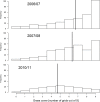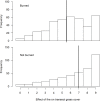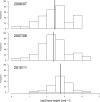Drivers of Bird Species Richness within Moist High-Altitude Grasslands in Eastern South Africa
- PMID: 27706186
- PMCID: PMC5051898
- DOI: 10.1371/journal.pone.0162609
Drivers of Bird Species Richness within Moist High-Altitude Grasslands in Eastern South Africa
Abstract
Moist high-altitude grasslands in South Africa are renowned for high avifaunal diversity and are priority areas for conservation. Conservation management of these areas conflicts with management for other uses, such as intensive livestock agriculture, which requires annual burning and leads to heavy grazing. Recently the area has become target for water storage schemes and renewable electricity energy projects. There is therefore an urgent need to investigate environmental factors and habitat factors that affect bird species richness in order to optimise management of those areas set aside for conservation. A particularly good opportunity to study these issues arose at Ingula in the eastern South African high-altitude grasslands. An area that had been subject to intense grazing was bought by the national power utility that constructed a pumped storage scheme on part of the land and set aside the rest for bird conservation. Since the new management took over in 2005 the area has been mostly annually burned with relatively little grazing. The new management seeks scientific advice on how to maintain avian species richness of the study area. We collected bird occurrence and vegetation data along random transects between 2006 and 2010 to monitor the impact of the new management, and to study the effect of the habitat changes on bird species richness. To achieve these, we convert bird transect data to presence only data to investigate how bird species richness were related to key transect vegetation attributes under this new grassland management. First we used generalised linear mixed models, to examine changes in vegetation grass height and cover and between burned and unburned habitats. Secondly, we examined how total bird species richness varied across seasons and years. And finally we investigated which habitat vegetation attributes were correlated with species richness of a group of grassland depended bird species only. Transects that were burned showed a larger decrease in vegetation cover compared to transects that were not burned. Grass height increased over time. Bird species richness was highest in summer compared to other seasons and increased over time. Overall bird species richness increased over the three summer surveys but species richness of birds that prefer heavily grazed habitat showed little change over the three years. Changes in bird species richness were best explained by the model with grass height for combined species richness of grassland depended birds but also for birds that prefer heavy grazing when treated alone. On one hand birds that prefer moderate grazing were best explained by a null model. However, overall bird species richness was better positively correlated to grass height than grass cover or dead grass. We conclude that frequent burning alone with relatively reduced grazing led to higher but less dense grass, which benefited some species and disadvantaged others. We suggest that management of this grassland use combination of fire and grazing and leave some areas unburned to accommodates birds of various habitat needs.
Conflict of interest statement
The first author was supported in the position of BirdLife South Africa Ingula Project Manager with funding by Eskom through The Ingula Partnership and by The Mazda Wildlife Fund with a vehicle for the duration of the project, while employed by BirdLife South Africa. This does not alter our adherence to PLOS ONE policies on sharing data and materials. We confirm that none of us has any competing interests in this study. We also confirm that we/ funders has no restrictions on sharing data as per the guidelines of PLOS ONE (as detailed online in our guide for authors http://www.PLOSone.org/static/editorial.action#competing). We made all relevant datasets readily accessible on an online public data repository as per the guidelines of PLOS ONE.
Figures








Similar articles
-
Dynamic multi-species occupancy models reveal individualistic habitat preferences in a high-altitude grassland bird community.PeerJ. 2019 Feb 15;7:e6276. doi: 10.7717/peerj.6276. eCollection 2019. PeerJ. 2019. PMID: 30783562 Free PMC article.
-
Natural grazing by horses and cattle promotes bird diversity in a restored European alluvial grassland.PeerJ. 2024 Jul 19;12:e17777. doi: 10.7717/peerj.17777. eCollection 2024. PeerJ. 2024. PMID: 39040934 Free PMC article.
-
Should heterogeneity be the basis for conservation? Grassland bird response to fire and grazing.Ecol Appl. 2006 Oct;16(5):1706-16. doi: 10.1890/1051-0761(2006)016[1706:shbtbf]2.0.co;2. Ecol Appl. 2006. PMID: 17069365
-
Biodiversity loss in Latin American coffee landscapes: review of the evidence on ants, birds, and trees.Conserv Biol. 2008 Oct;22(5):1093-1105. doi: 10.1111/j.1523-1739.2008.01029.x. Conserv Biol. 2008. PMID: 18759777 Review.
-
Agriculture and herbivorous waterfowl: a review of the scientific basis for improved management.Biol Rev Camb Philos Soc. 2017 May;92(2):854-877. doi: 10.1111/brv.12258. Epub 2016 Mar 4. Biol Rev Camb Philos Soc. 2017. PMID: 26946181 Review.
Cited by
-
The critical role of coastal protected areas in buffering impacts of extreme climatic conditions on bird diversity and their ecosystem services' provisioning in the Eastern Cape Province, South Africa.Ecol Evol. 2023 Oct 20;13(10):e10452. doi: 10.1002/ece3.10452. eCollection 2023 Oct. Ecol Evol. 2023. PMID: 37869441 Free PMC article.
-
Dynamic multi-species occupancy models reveal individualistic habitat preferences in a high-altitude grassland bird community.PeerJ. 2019 Feb 15;7:e6276. doi: 10.7717/peerj.6276. eCollection 2019. PeerJ. 2019. PMID: 30783562 Free PMC article.
References
-
- Hoekstra JM, Boucher TM, Ricketts TH, Roberts C. Confronting a biome crisis: global disparities of habitat loss and protection. Ecology Letters. 2004. December;8(1):23–9.
-
- Trollope WSW. Personal perspective on commercial versus communal African fire paradigms when using fire to manage rangelands for domestic livestock and wildlife in southern and eastern African ecosystems. Fire Ecology. 2011;7(1):57–73.
-
- Barnes KN, editor. The Important Bird Areas of Southern Africa. Johannesburg, South Africa: BirdLife South Africa; 1998. 394 p.
-
- Maphisa DH, Donald PF, Buchanan GM, Ryan PG. Habitat use, distribution and breeding ecology of the globally threatened Rudd’s Lark and Botha's Lark in eastern South Africa. Ostrich. 2009. April;80(1):19–28.
MeSH terms
LinkOut - more resources
Full Text Sources
Other Literature Sources

